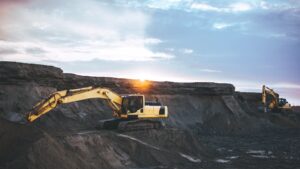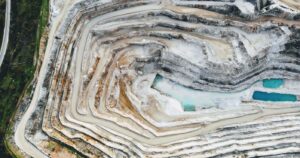Virtual Reality Meets Industrial Innovation: How Technology Can Aid Creativity
Entertainment has been one of the drivers of Virtual Reality (VR) systems with popular systems from Oculus, HTV Vive and Sony’s PlayStation VR system. Commercial applications are taking the next step, Mixed Reality (XR), overlaying graphics on top of the real world led by companies like Magic Leap and Microsoft’s HoloLens. As an enabling technology, VR/XR has the potential to touch many facets of the industries we cover, including Industrial Design, Data Modelling and Visualization. To date, problems with display resolution, computational processing power and battery life have prevented the technology from reaching its true potential.
Varjo – the potential disruptor

Finnish startup Varjo have developed a VR/XR headset capable of human-eye resolution for industrial applications. We caught up with Co-founder and Chief Product Officer Urho Konttori, to learn about his company and to gain deeper insight into how technology could disrupt the automotive, energy, aerospace, manufacturing and construction industries.
CTG: Urho, can you summarize how the company started?
Varjo: The company was founded almost by accident just over two years ago. We recognized that there was a serious gap in performance for current leading VR/XR technologies that needed to be addressed. So, we set out on this challenge of achieving a headset system with technology which had the true potential to be used widely across the professional industries. The company launched with $1 million in Seed funding and development kicked off on September 1st, 2016. We came together from a range of companies including Intel, Nokia and Microsoft, with pedigrees in advanced camera technology.
CTG: And how much has the company grown since then?
Varjo: Today we have around 95 people and are growing. We have raised over $45 million in equity, and recently received $31 million in our Series B round. This was led by Atomico with our new strategic investor Next47 (Siemens VC arm) joining the round. Our Series A investors EQT Ventures and Lifeline Ventures were also included. The round was all about raising funds for our go-to-market strategy. Before this we had been working on the production development for two years. Typically, in the hardware industry, you need to purchase parts around four to six months ahead of time due to large lead times. That’s why large investment was needed at this stage. The funding is also being used to develop a software platform, which we plan to announce next year.
CTG: Can you explain the solutions that Varjo have developed?
Varjo: We have created the first industrial grade VR/XR product which has the same resolution as the human eye. We call our novel display technology the Bionic Display. The product, launching in Q1 2019, will be a VR/XR headset that allows professionals in sectors from aerospace to architecture to work in human-eye resolution in virtual or mixed reality when designing new products. The headsets can be integrated with standard 3D engines and software tools. Unlike other systems, our products can be used on the field where extreme precision and visual fidelity are paramount.

We are currently collaborating with firms such as Airbus, Audi, Saab, Sellen, Volkswagen and Volvo to optimize the headsets for their respective business sectors and needs. We are also working with VTOL players Lilium to help accelerate their plane design prototyping and decrease their products’ time to market.
CTG: Why is the industrial design market in need of disruption today?
Varjo: Technological innovation is nothing new for the industrial design market. In the automotive industry, for example, players have been working on VR for over two decades with the aim of accelerating design prototyping time and improving product quality. This began with costly military grade headsets, which changed to game system headsets around a decade ago. Five years ago, players switched to using consumer grade headsets, which for the first time altered how industrial designers operate. Designers could create 3D prototypes in days. Today, many industrial designers use VR labs to create a virtual product in a few days, which accelerates a process that previously took weeks or even months. We want to take things a step further by reducing prototyping time to seconds, and with maximum precision.
This level of speed and design precision applies to designers across all sectors. Architects for example, would benefit from the ability to be inside one of their prototypes in real space before it’s constructed. Ultimately, this innovation removes technological bandwidth (hand-to-computer) for designers and move closer to the ideal design platform for creatives to work freely without barriers.
CTG: Outside of industrial design applications, are there market opportunities within the visualization of data modeling, and simulation space?
Varjo: Innovative data modelling visualization has developed considerably through Siemens participation in our Series B funding round. We see the opportunity on the visualization side for different kinds of simulations’ data models. This creates a new opportunity for data modelers, as you now can accurately separate fine grain data sets. You can now accurately model pressure gradients, something that hasn’t been achieved before in other VR/XR systems.
This is a very early market and not many companies are well versed on how to do data visualization using VR/XR. A key limiting factor previously was graphical resolution. We see this new market as having a huge opportunity in a few years’ time.
CTG: The construction industry is notorious for being slow to adopt new technologies, and as a result have suffered from productivity problems. How can Varjo address this productivity issue?
Varjo: It’s true that industries such as construction are not the fastest moving on technology adoption. We believe that for construction, VR/XR will enable a fundamental change to how the entire design process is executed when utilized with advanced Building Information Modeling (BIM) software. It will also help to address with onsite construction management, with project development being tackled by computer in real-time, VR/XR can work with project lifecycle management solutions to help address value chain fragmentation.
CTG: Where do you see the first practical market application?
Varjo: We see the training side of the market as a big opportunity for the first application. The aviation space, for example, is in dire need of innovation. Today, every pilot needs to be retrained annually to keep his or her license. This means flying a pilot out to a full cockpit simulation center, which has obvious cost implications. Our alternative is for all aviation players to host their own VR/XR systems, and the trainee can join remotely without sacrificing resolution and precision. Our VR/XR systems, though not fully revealed will also use an eye tracing system, so you can accurately assess the reactions/emotions of the trainee in real-time.
We predict that half of the pilot training can be taken to VR/XR headsets, which doubles the throughput of the whole industry. Likewise, there is similar demand for all training where high costs and complexities are involved. We are already working with a few of the energy companies for advanced training for control systems in nuclear plants and mobile tower operations.
CTG: What do you see as the most enduring practical application?
Varjo: VR/XR will ultimately touch all parts of our lives in the near future. We believe that the creative process overall is going to deliver benefits in the short and long-term, as well as in other spaces such as education. We see computer labs at universities and schools being replaced by VR labs, which will take pupils to a place to practice on highly complex, creative and challenging problems.
CTG: What are the next major steps for the team at Varjo?
Varjo: Bar some final certification stages, we are very close to bringing the VR/XR product to market. We have all our manufacturing supply chains set up in China and have already run multiple prototypes’ flows. Our VR system, which is more advanced in terms of technological capability, will come later. 2019 will the big year for us in terms of product releases, so be sure to keep track of our other big announcements for the rest of 2018.
CTG: Thanks Urho.
| Get the latest on sustainable innovation delivered straight to your inbox. |


